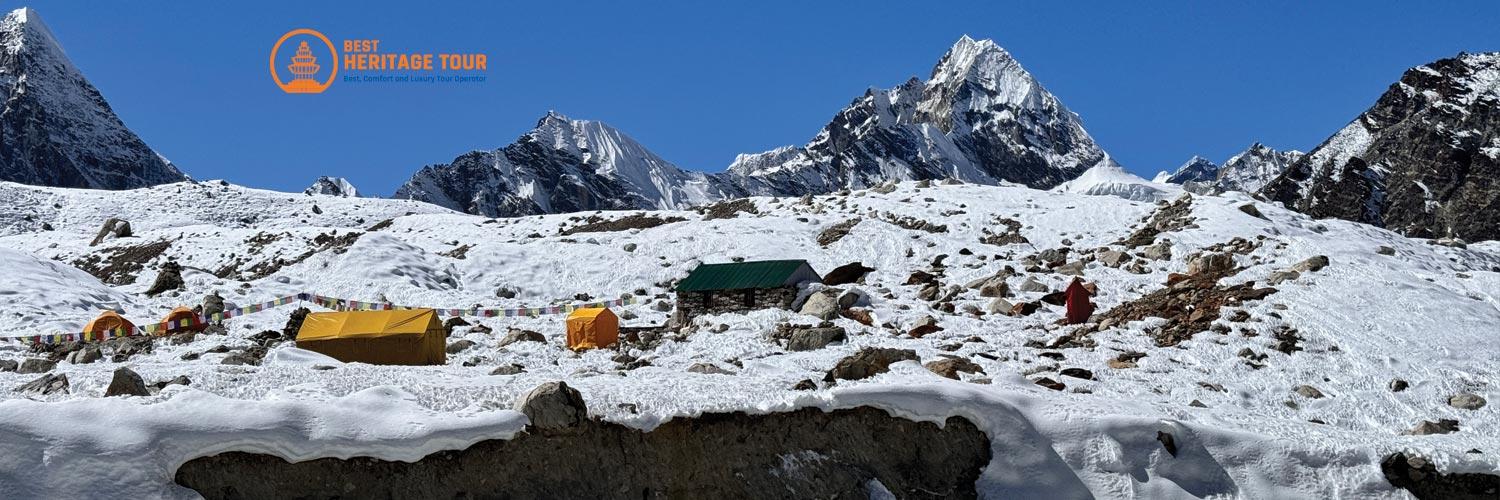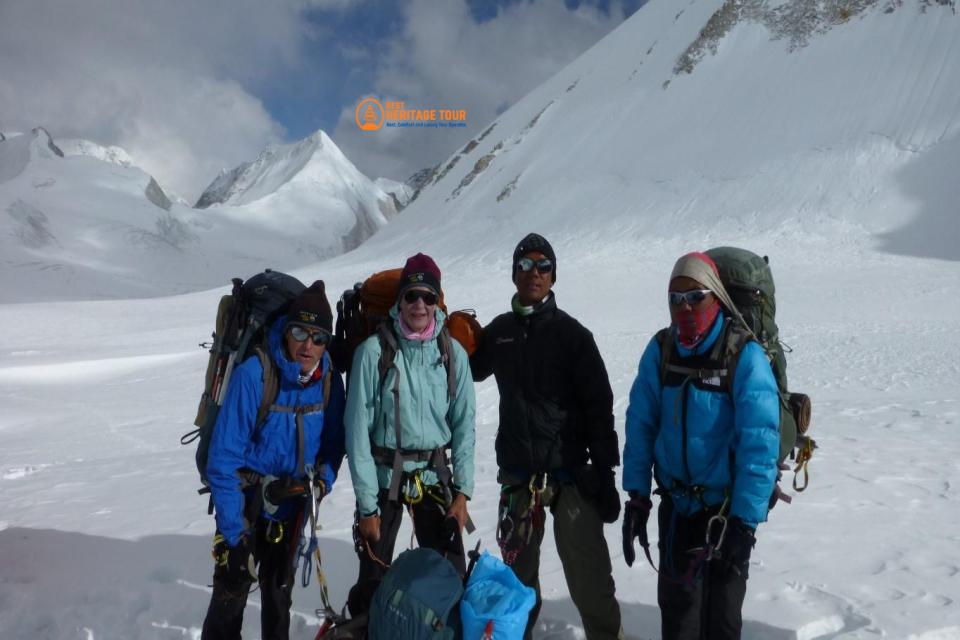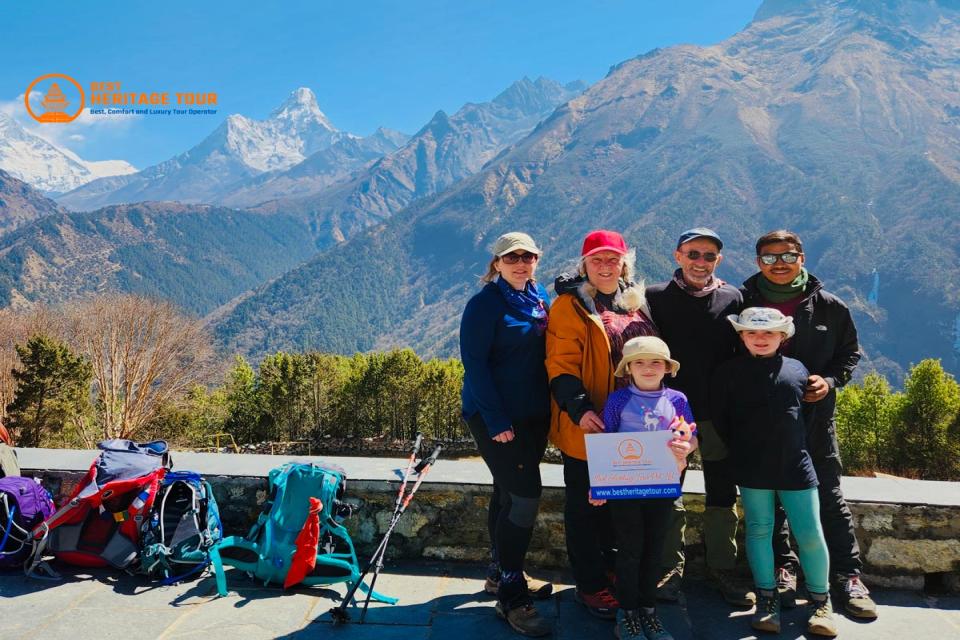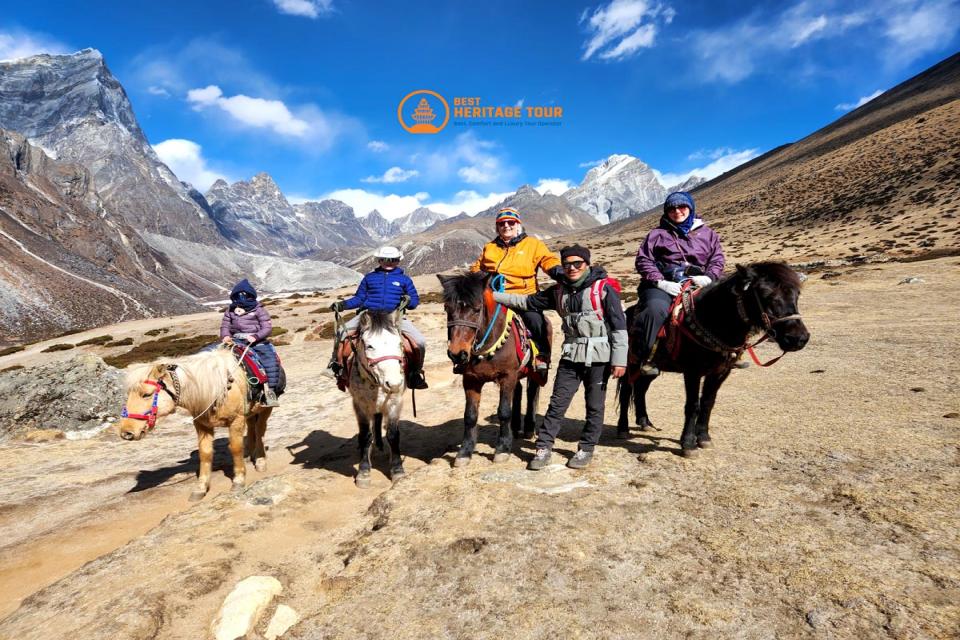The Everest Three Pass Trek is one of Nepal's most exhilarating and rewarding trekking routes, offering unmatched views of Mount Everest and surrounding peaks. Whether you're planning to embark on the trek in 2025 or 2026, this adventure takes you through high-altitude passes, Sherpa villages, and some of the most stunning landscapes on Earth. Here's everything you need to know to plan your Everest Three Pass Trek.
What Is the Everest Three Pass Trek?
The Everest Three Pass Trek is a challenging high-altitude adventure that takes trekkers through the Khumbu region, known for its breathtaking beauty and spiritual atmosphere. This trek crosses three major passes- Kongma La Pass (5,535 meters), Cho La Pass (5,420 meters), and Renjo La Pass (5,360 meters); offering spectacular panoramic views of Everest (8,848.86m), Lhotse (8,516m), Makalu (8,485m), and other towering Himalayan peaks.
This trek combines rugged terrain, serene mountain lakes, and the cultural richness of Sherpa villages. It’s not just about reaching the summit—it’s about embracing the entire Everest region, its people, and its stunning environment.
Why Trek the Everest Three Pass in 2025 or 2026?
Planning a trek to Everest Three Pass in 2025 or 2026 is your chance to take on one of the most iconic adventures in Nepal. Here’s why the Everest region continues to captivate trekkers:
-
New Travel Developments: The region has seen improvements in infrastructure, offering trekkers more comfort and convenience while maintaining the rugged spirit of adventure.
-
Growing Popularity of Responsible Tourism: Sustainable travel is becoming a focal point, so by trekking responsibly, you can contribute to preserving Nepal’s cultural and natural heritage.
-
Perfect for Adventure Seekers: If you’re looking for a more demanding alternative to the Everest Base Camp trek, the Three Pass Trek offers a serious challenge, with high-altitude passes testing your endurance and rewarding you with spectacular views.
What to Expect on Your Trek to Everest Three Pass
1. Kongma La Pass (5,535 meters / 18,159 feet)
Your journey begins with the Kongma La Pass, one of the highest points of the trek. Although it’s a tough climb with a rocky and steep path, the panoramic views of Everest, Lhotse, and Makalu make the effort worthwhile.
2. Cho La Pass (5,420 meters / 17,782 feet)
The next pass, Cho La, is both physically demanding and a bit technical. The pass is covered in snow during some months, adding beauty and challenge to the trek. From here, you'll be treated to views of the Gokyo Lakes and surrounding peaks.
3. Renjo La Pass (5,360 meters / 17,585 feet)
The final pass is Renjo La, which offers some of the best vistas of the Everest massif. After crossing the pass, trekkers descend into the peaceful Gokyo Valley, perfect for acclimatization and taking in the serene beauty.
Highlights of the Everest Three Pass Trek
-
Breathtaking Views of Everest and Surrounding Peaks: Each pass offers stunning panoramic views of Everest, Lhotse, Makalu, and other majestic mountains that will leave you in awe.
-
Crossing Three High Passes: Kongma La, Cho La, and Renjo La are among the highest trekking routes in the world, presenting a challenging yet incredibly rewarding experience.
-
Gokyo Lakes and Gokyo Ri: The Gokyo Lakes are famous for their striking turquoise waters. Climbing Gokyo Ri will reward you with some of the best views in the Everest region.
-
Tengboche Monastery: Situated at 3,867 meters, this monastery offers both cultural immersion and spiritual insights, while also providing incredible views of Everest and Ama Dablam.
-
Sherpa Villages and Culture: Visit Namche Bazaar, Dingboche, and Thame to experience the warmth of Sherpa hospitality and explore monasteries and cultural sites along the way.
-
Wildlife and Flora: Trek through lush forests, alpine meadows, and rhododendron-filled trails, with opportunities to spot Himalayan tahr, pheasants, and even the elusive snow leopard.
Everest Three Pass Trek Itinerary (Sample – 17 Days)
Embarking on the Everest Three Pass Trek is an exciting blend of adventure and necessary acclimatization. The following is a sample 17-day itinerary, guiding you through the three famous Himalayan passes: Renjo La (5,360m), Cho La (5,420m), and Kongma La (5,535m), while also exploring Everest Base Camp (5,364m) and the stunning Gokyo Lakes (4,750m).
Day 1: Fly from Kathmandu to Lukla (2,850 m / 9,350 ft) & Trek to Phakding (2,650 m / 8,562 ft)
Day 2: Trek to Namche Bazaar (3,440 m / 11,285 ft)
Day 3: Acclimatization day at Namche Bazaar (3,440 m / 11,285 ft)
Day 4: Trek to Thame (3,750 m / 12,303 ft)
Day 5: Trek to Lundeng (4,500 m / 14,764 ft)
Day 6: Trek to Gokyo Lake (4,750m / 15,583ft) via Lenjola Pass (5,446m / 17,867ft)
Day 7: Acclimatization day at Gokyo & optional hike to Gokyo Ri (5,400 m / 17,814 ft)
Day 8: Trek to Thangnak (4,700m / 15,400ft)
Day 9: Trek to Dzongla (4,855 m) via Chola Pass (5,420 m)
Day 10: Trek to Lobuche (4,910m / 16,175ft)
Day 11: Trek to Everest Base Camp (5,364m) & back to Gorak Shep (5,185m)
Day 12: Trek to Kala Patthar (5,555 m / 18,208 ft) & return to Lobuche (4,910m / 16,175ft)
Day 13: Trek to Chhukung (4,730 m / 15,580 ft) crossing Kongma La Pass (5,535 m / 18,159 ft)
Day 14: Trek to Tengboche (3,855 m / 12,850 ft)
Day 15: Trek to Namche Bazaar (3,440 m / 11,285 ft)
Day 16: Trek to Lukla (2,850 m / 9,350 ft)
Day 17: Flight from Lukla to Kathmandu (2,850m / 9,350ft)
Note: The itinerary can be customized based on fitness, acclimatization needs, and weather conditions.
Best Time for the Everest Three Pass Trek
The best times for the Everest Three Pass Trek in 2025 and 2026 are during spring (March-May) and autumn (September-November). These seasons offer clear skies, perfect trekking conditions, and stunning views of the Himalayas.
-
Spring: Moderate temperatures and blooming rhododendrons make this season ideal for trekking.
-
Autumn: Crisp air and clear views following the monsoon season make this the most popular time for trekkers.
Avoid trekking during winter (December-February) due to extreme cold and potential snowstorms at high altitudes. Similarly, the monsoon season (June-August) brings heavy rain and the risk of landslides, making it less suitable for trekking.
Preparation Tips for the Everest Three Pass Trek
-
Physical Fitness: This trek is physically demanding, so it’s crucial to train with cardio, strength exercises, and altitude acclimatization.
-
Packing: Pack light but bring necessary cold-weather gear, trekking boots, a durable backpack, and essentials like a first-aid kit and water purification tablets.
-
Altitude Acclimatization: Allow for proper acclimatization, particularly in Namche Bazaar and Gokyo, to minimize the risk of altitude sickness.
-
Choose a Reliable Guide or Tour Operator: Opt for a seasoned tour operator like Best Heritage Tour, ensuring a well-planned and safe trek.
Conclusion
For those seeking an adventurous and rewarding trek, the Everest Three Pass Trek offers a unique opportunity to experience the heart of the Himalayas. Whether you’re an experienced trekker or an adventurer looking for your next challenge, crossing the three high passes and standing at the base of the world’s highest peak will be an unforgettable experience.
Plan Your Everest Three Pass Trek Today with the Best Heritage Tour
At Best Heritage Tour, we specialize in crafting unforgettable trekking experiences in Nepal, including the Everest Three Pass Trek. We take care of all the details, from permits to accommodations, so you can focus on enjoying the adventure.
Contact Us for Bookings & Information:
-
Phone/WhatsApp/Viber: +9779851149197 / +9779810043046
-
Email: bestheritagetour@gmail.com / info@bestheritagetour.com
-
Website: www.bestheritagetour.com
-
Location: Thamel Marg, Kathmandu, Nepal
Author: Best Heritage Tour
Date: 13th April, 2025







